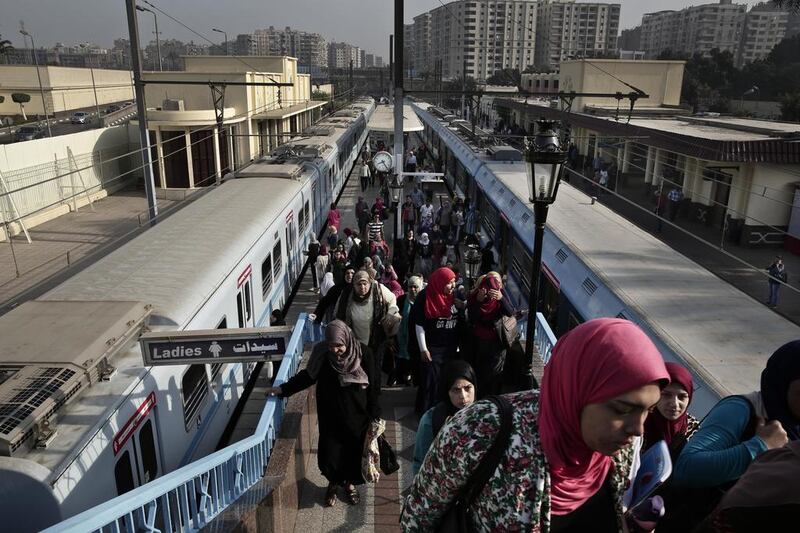If there is one mega-project in Egypt that demands priority above all, it is the rapid expansion of metro lines and light rail.
Not just priority, the lack of local public transport should be put at the level of a national emergency: the inability to move efficiently around cities is stifling economic growth, generating the destruction of vast tracts of agricultural land and historic buildings and causing severe hardship to the country’s citizens.
Put aside, at least for the time being, the idea of a new capital, bullet trains to Luxor, nuclear power plants, the reclamation of a million feddans of agricultural land or the construction of a million houses for the poor. There is a far, far simpler way to deal with the country’s most pressing problems.
There can be no good reason to need over an hour to drive a kilometre or two through the centre of the city. I have walked for miles while passing cars, buses and lorries stalled in traffic. It’s maddening that it can be quicker to walk across town than to go by car. The gridlock likewise hinders goods and spare parts from reaching markets, at great cost to the economy as a whole.
The World Bank, in a note released in 2014, estimated that congestion in the greater Cairo area alone shaved about 3.6 percentage points off Egypt’s GDP.
Let’s do a back-of the-envelope calculation. The IMF estimated that Egypt’s GDP was US$332.3 billion in 2016. If the IMF figure is indeed accurate, it would mean Egypt lost at least $12bn last year because people and cargo spent so much time stuck in traffic – or because of the traffic jams they didn’t even bother to move about.
If there were more trains, there would be fewer vehicles on the streets.
The cost of building a new metro line seems to be around $2bn to $3bn. It’s not hard to imagine the improvement and savings that would result if $12bn were spent quickly to add more lines or perhaps to extend light rail to the many satellite cities around Cairo and other major towns.
But alas, metro construction is moving at glacial pace.
Cairo now has three lines. A fourth line has been in the planning stage for years, with construction at one point due to have started in September 2012, but repeatedly delayed. The new transport minister said last week he expected to sign with contractors in July for the first phase. This section will run west from Al Malak Al Salih station, which is 3 kilometres south of Tahrir Square, to the satellite station of Sixth of October west of Cairo, passing by the pyramids along the way.
The government is still searching for finance for a fifth line, which would loop around the north of Cairo from the Nile to the eastern satellite cities. A sixth line that would run from north to south, parallel to and to the east of the first line, seems a distant dream.
Much of the delay in Cairo is because the network has been starved of funds. Apart from Alexandria, where the main tramway is getting an upgrade, metro lines have been absent entirely from the country’s other major cities. This has been disastrous for Egypt. Because the cost in time and money of travelling is so enormous, people prefer to live and work as close to city centres as possible.
The result is that vast tracts of Egypt’s best farmland have been lost to urban sprawl – in a country where 95 per cent of the land is vacant desert not far from where the bulk of the population lives. Gorgeous historic buildings are also being torn down right and left to erect cheap and hideous apartment towers for people desperate for housing.
Living in the desert would be far more attractive were the government to extend metro lines and light rail. The government could have the extra bonus of being able to sell the land along their path, which in turn could help finance future lines.
There is also a social aspect. Only about 10 per cent of Egyptians have access to a private car, which means the other 90 per cent must use public transport, minibuses or the occasional taxi to get around. Metro construction, which is fairly labour-intensive, would also create thousands of jobs. For example, the third phase of Cairo’s third metro line, which extends westward across the Nile from downtown Cairo, is said to be employing 5,000 people.
Egypt needs to expand its metro network urgently, not just in Cairo, but in the larger provincial towns throughout the country.
Patrick Werr has worked as a financial writer in Egypt for 27 years.
business@thenational.ae
Follow The National's Business section on Twitter





